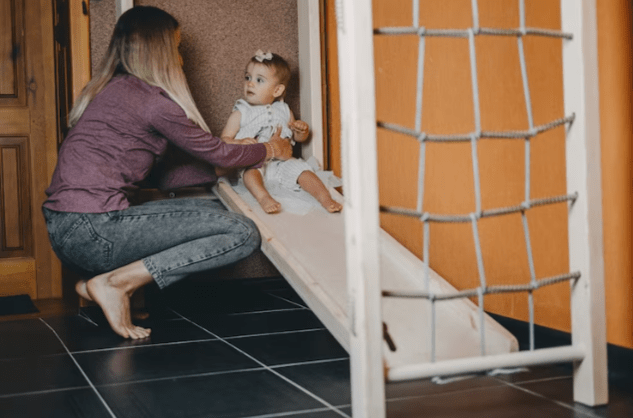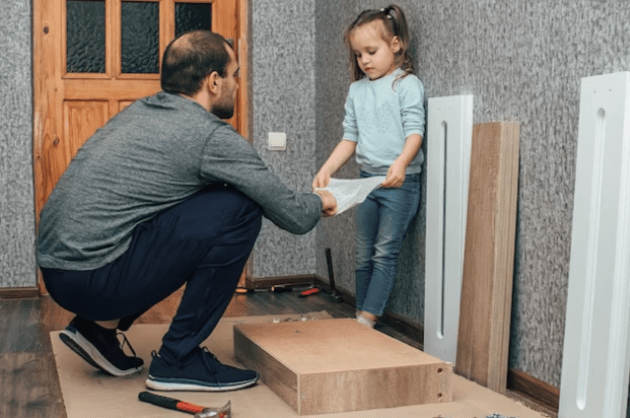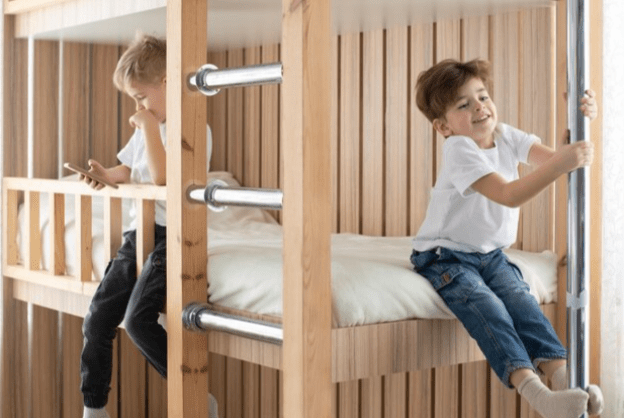Discover the top childproofing Solutions to keep your home safe for kids. Learn about locks, guards, and more safety essentials.
Overview
The most important thing that can be done to keep young children, especially those under five, safe from the dangers that are all around them is to be childproof. Children are more likely to get hurt or have accidents in their own homes because they are naturally curious and don’t understand risk. So, childproofing is not only a good idea, it’s also necessary.
To make sure everyone is safe, the house must first be carefully checked out and then changed to get rid of any possible dangers, like sharp edges, small items that could be swallowed, toxic chemicals, and places where people could fall. Childproofing includes many steps, such as securing big pieces of furniture so they don’t fall over and putting safety locks on closets that hold things that could be dangerous.
This article talks about a lot of easy and effective ways to childproofing solutions in your home. It gives parents and other caregivers the information and tools they need to make their home a much safer place for kids to play, learn, and grow without worrying about getting hurt.
Recognizing the Need for Child Safety Measures

Little children learn by touching, tasting, and moving around to explore their environment, therefore childproofing is essential. Though vital for growth, this innate curiosity might unintentionally expose kids to dangerous situations including hot surfaces, poisonous materials, and falls.
These dangers emphasize how crucial childproofing is as a preventative step to protect children from typical household hazards. Childproofing creates a safe, secure atmosphere where kids can explore and develop without endangering their safety or well-being by reducing potential hazards. It’s an essential action that all parents should take to provide the best possible safety for their young adventurers.
Evaluating Your House
The first step in childproofing is to take a close look around your house from the perspective of a child. You can gain a better understanding of what might attract a child’s attention and present a risk by going on your hands and knees.
With this unusual viewpoint, you may see potential hazards that adults would miss, like jagged edges, choking hazards in little things, easily accessible electrical outlets, and other perils. This important phase helps to guarantee a safer environment for inquisitive young ones by setting the groundwork for a thorough childproofing plan. It also assists in identifying specific areas and things that require immediate attention.
Childproofing Solutions by Area
Kitchen Cabinet and Drawer Locks: It’s essential to install safety locks on cabinets and drawers to keep kids away from potentially dangerous goods like knives, toxic cleaning products, and breakables. This creates a safer space where young children can play without fear of injury.
Use stove knob covers to keep kids from accidentally turning on the stove.
Appliance Latches: To prevent kids from accessing appliances like the dishwasher and refrigerator, install latches to secure them.
Bathroom Toilet Locks: To avoid drowning concerns, install locks on toilet lids.
Soft faucet coverings can prevent youngsters from being hurt when they bump into hard fixtures.
Non-Slip Mats: To stop people from slipping and falling, place non-slip mats on the bathroom floor and in the bathtub.
Installing bumpers on furniture edges and corners in living areas can help avoid injuries caused by falls.
Safeguard Furniture and TVs: To firmly bind large, heavy furniture and TVs to the wall, use furniture straps and anchors. By taking this vital precaution, tipping can be avoided and children are protected from harm from falling objects in their active and curious surroundings.
Window Guards: To stop people from falling out of windows, install window guards or locks.
Bedrooms: Make sure the mattress in your crib fits tightly and that it complies with modern safety regulations. Remove cushions, stuffed animals, and thick blankets to drastically reduce the chance of suffocation and provide a safe and secure resting space for your child.
Cordless Window Coverings: To avoid strangling hazards, use cordless blinds or keep cables out of reach.
Swimming pools should be surrounded by a fence that has a self-closing and self-latching gate installed outdoors.
Safe Play Equipment: Make sure outdoor play equipment is sturdy and support it with materials that absorb stress, such as rubber matting or mulch underneath. By absorbing falls and creating a safer play environment for kids’ outside activities, this precaution improves safety.
Use safety plates or outlet covers to keep kids from sticking things in electrical outlets for electrical safety.
To keep long electrical cables out of reach, use wind-ups or cord shorteners.
Safety of Chemicals and Poisons

Safe Storage: Locked high cabinets should be used to keep all chemicals, prescription drugs, and cleaning materials.
Use safety latches on drawers and cabinets under sinks where potentially dangerous materials may be kept.
Generally Safe Advice
Carbon monoxide and smoke detectors: Install and check carbon monoxide and smoke detectors regularly.
First Aid Package: Maintain a well-supplied first aid kit and contact phone numbers close at hand.
monitoring: Constant, vigilant monitoring is the best safety measure, even when childproofing greatly lowers dangers.
In Conclusion
The process of childproofing is continuous and changes as your child does. As kids become older, they can get past earlier security precautions, so it’s critical to periodically review and update your childproofing strategies. Recall that the purpose of childproofing is to make sure your child can explore and learn in a safe setting, not to restrict their freedom to do so. You can make your house a safer place where your child can grow and develop without as many risks by being aware of the possible hazards and putting the right childproofing solutions in place.
We hope you found this information helpful in your journey to create a safer environment for your family. At GuardWell Safety, we understand that every home is unique, and so are your child-proofing needs. That’s why we offer a Free Child-Proofing Consultation tailored to your specific requirements. Let our experts help you identify potential hazards and provide personalized solutions to make your home a secure haven for your little ones. Book your free consultation today and take the first step towards peace of mind.






